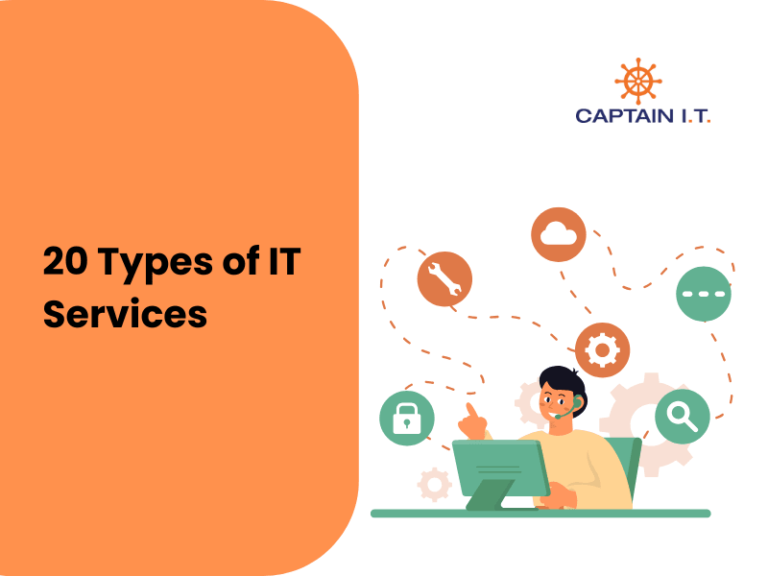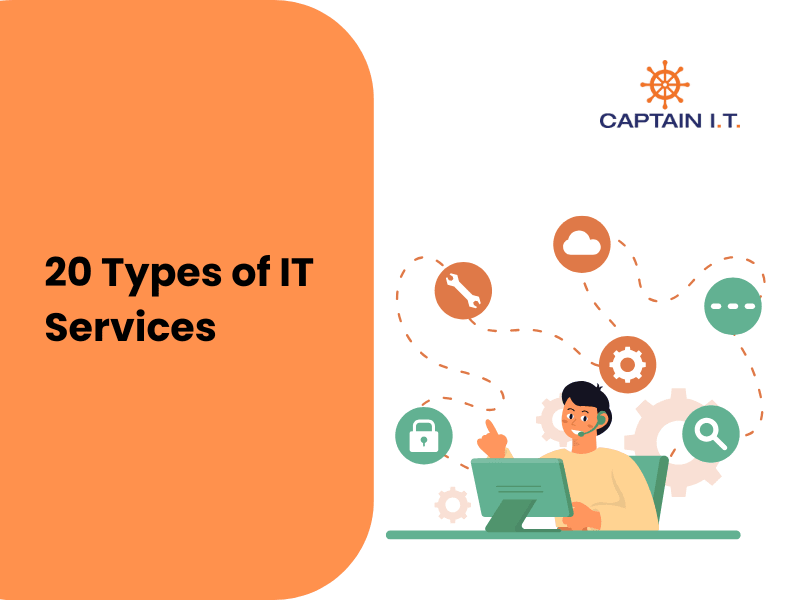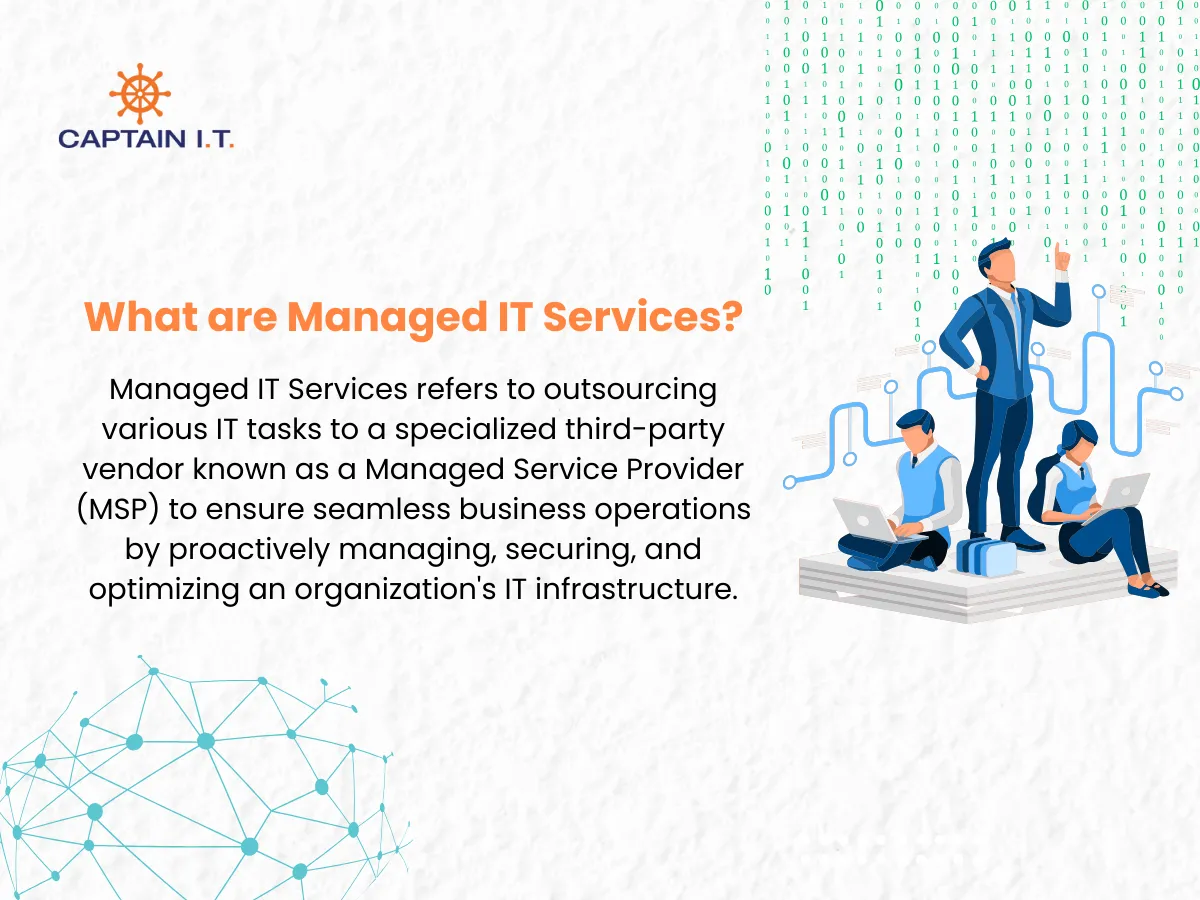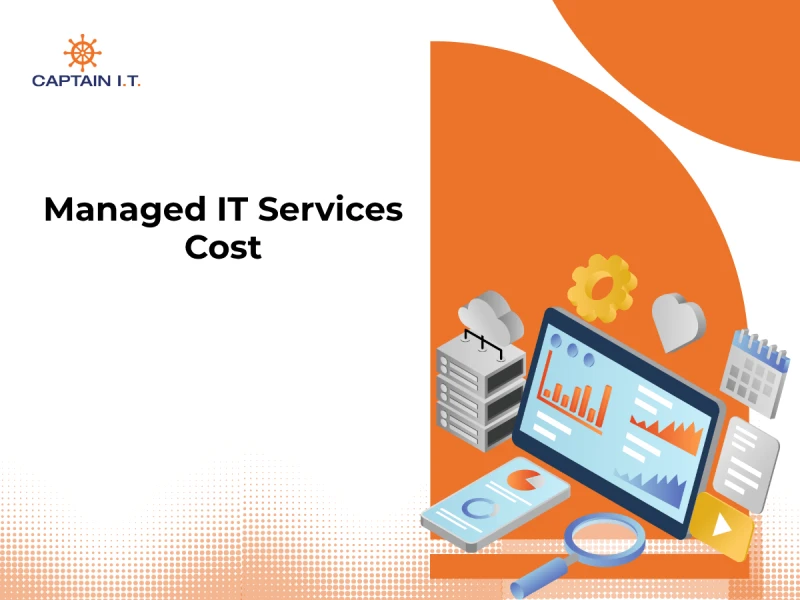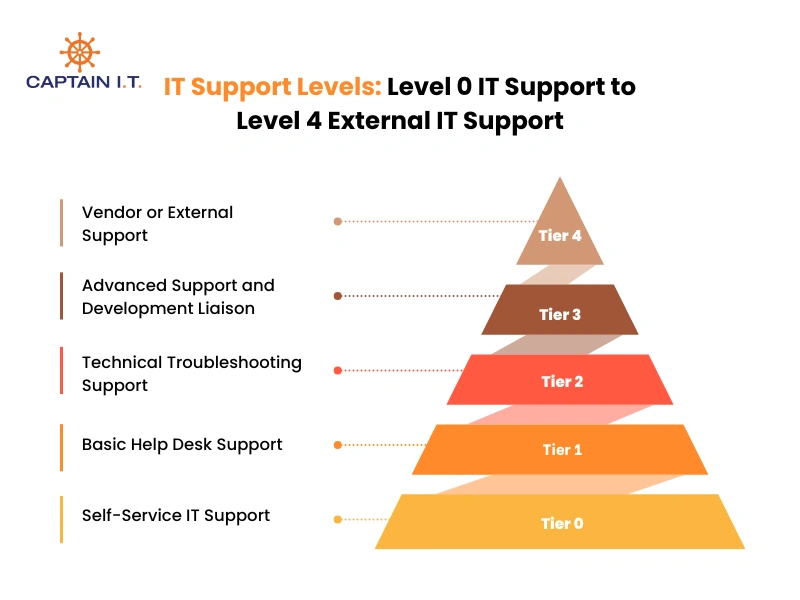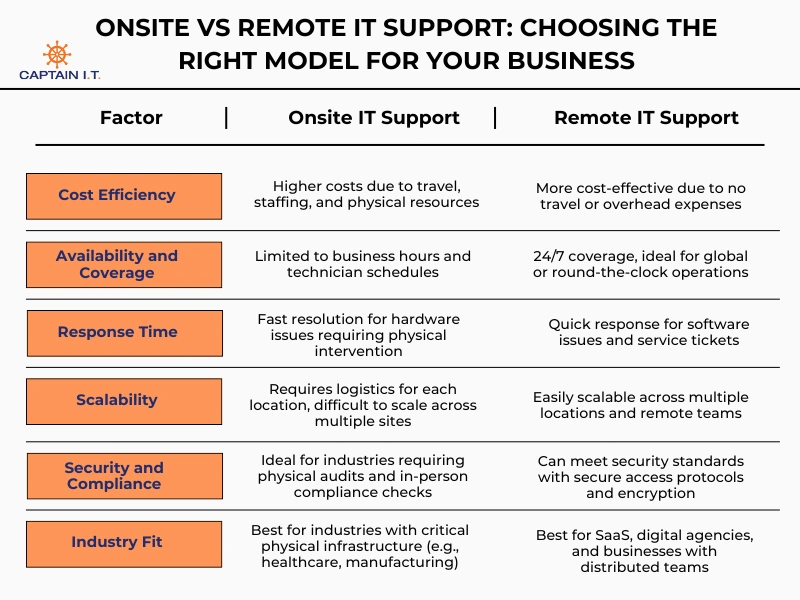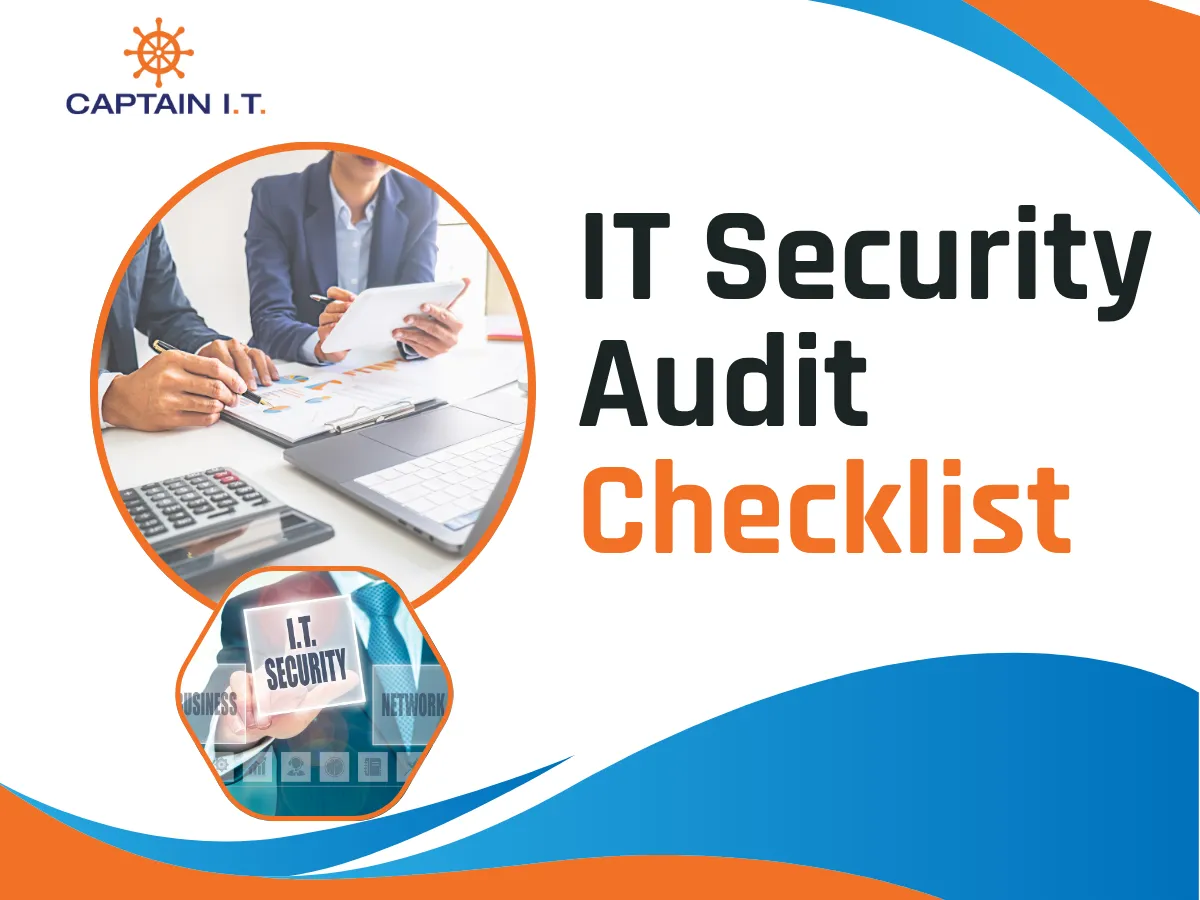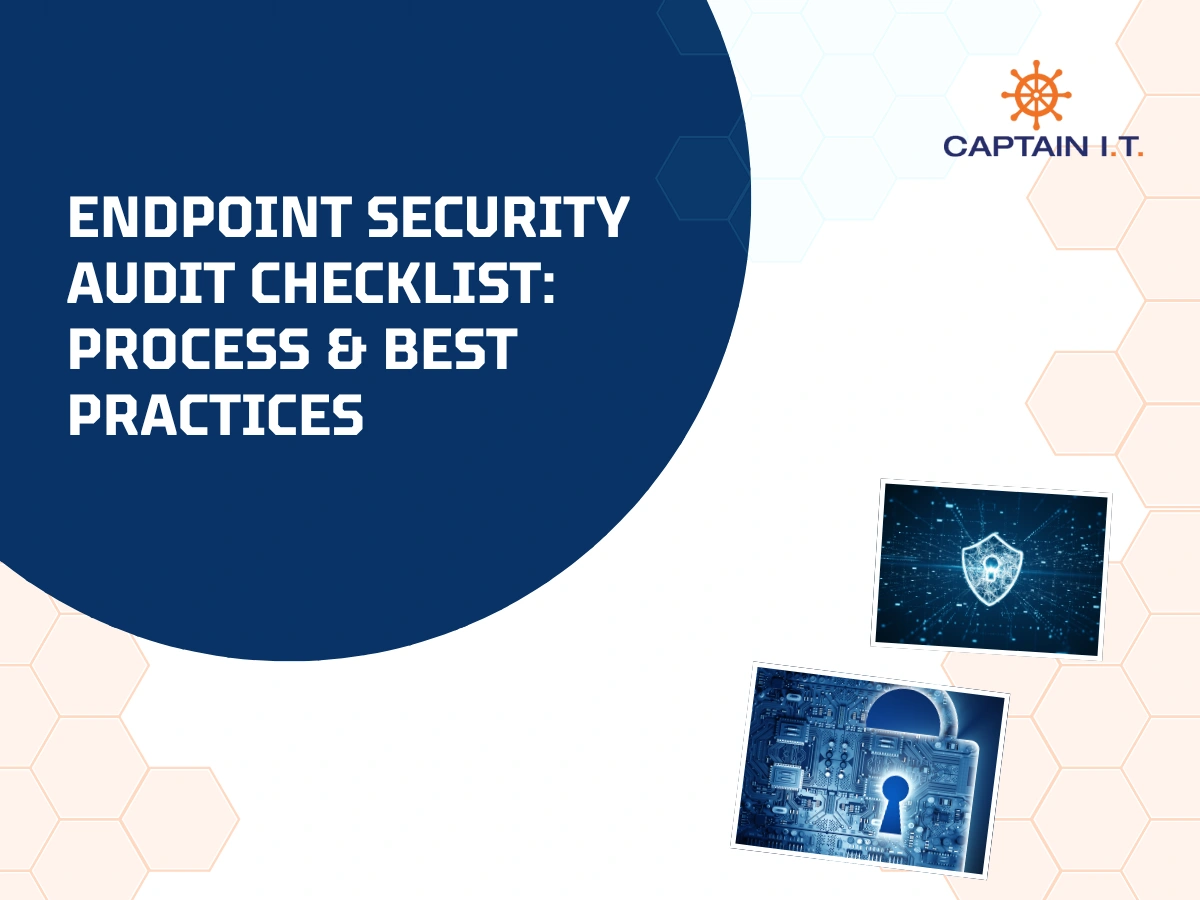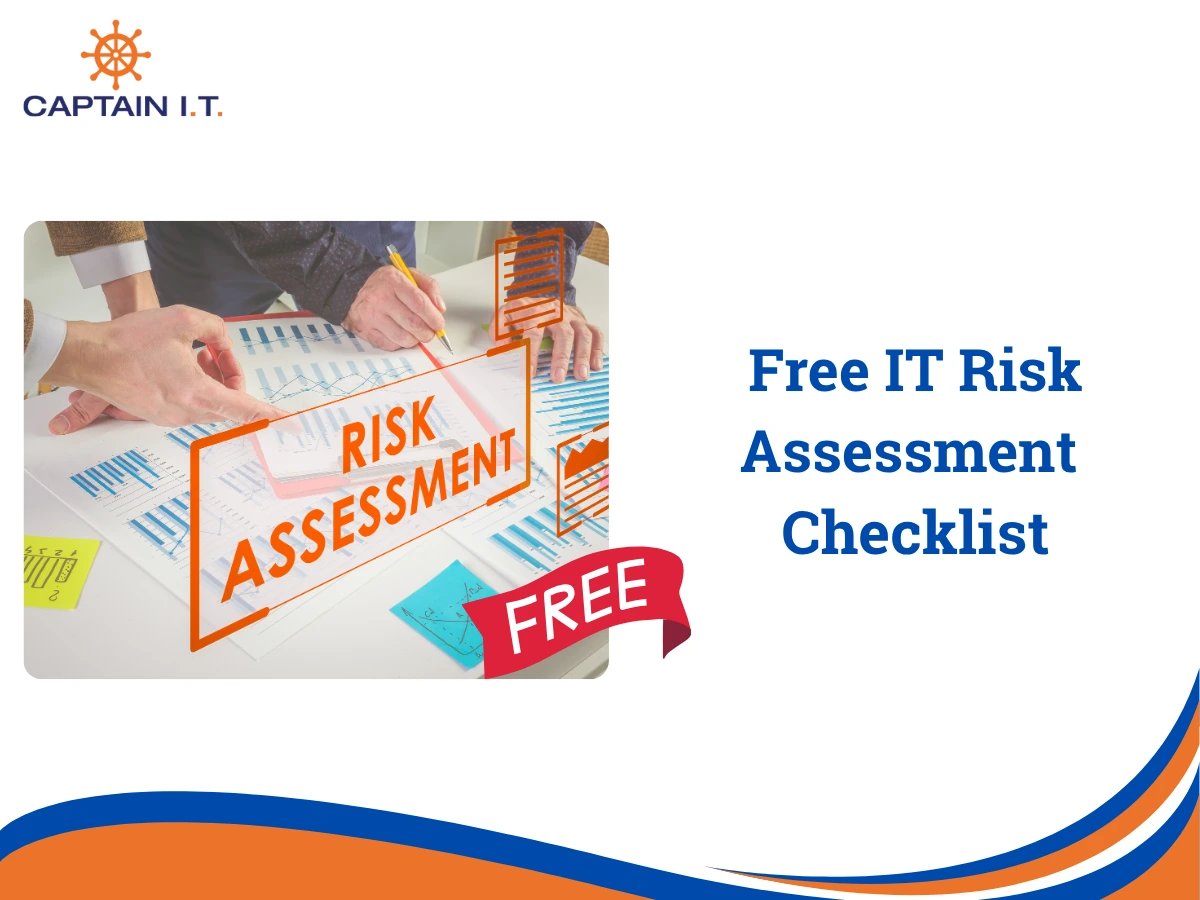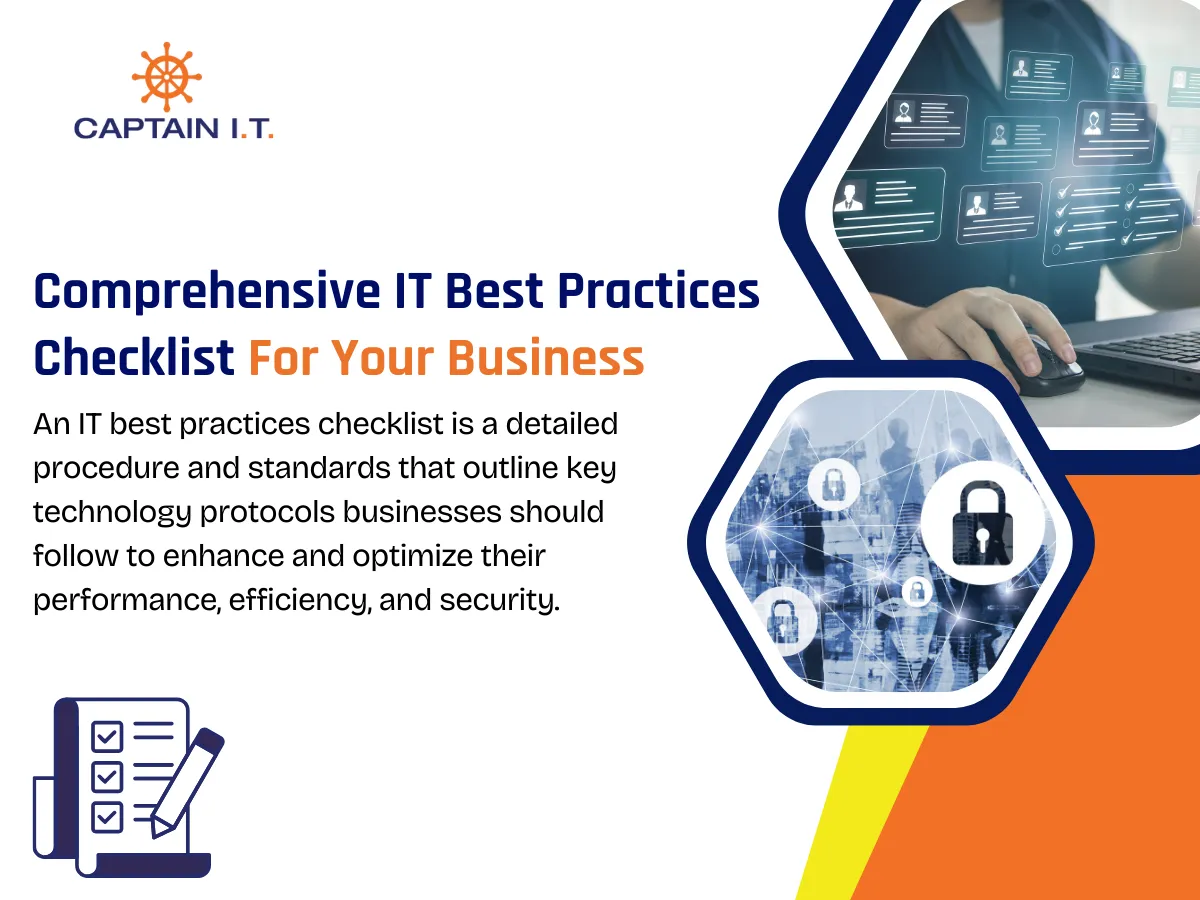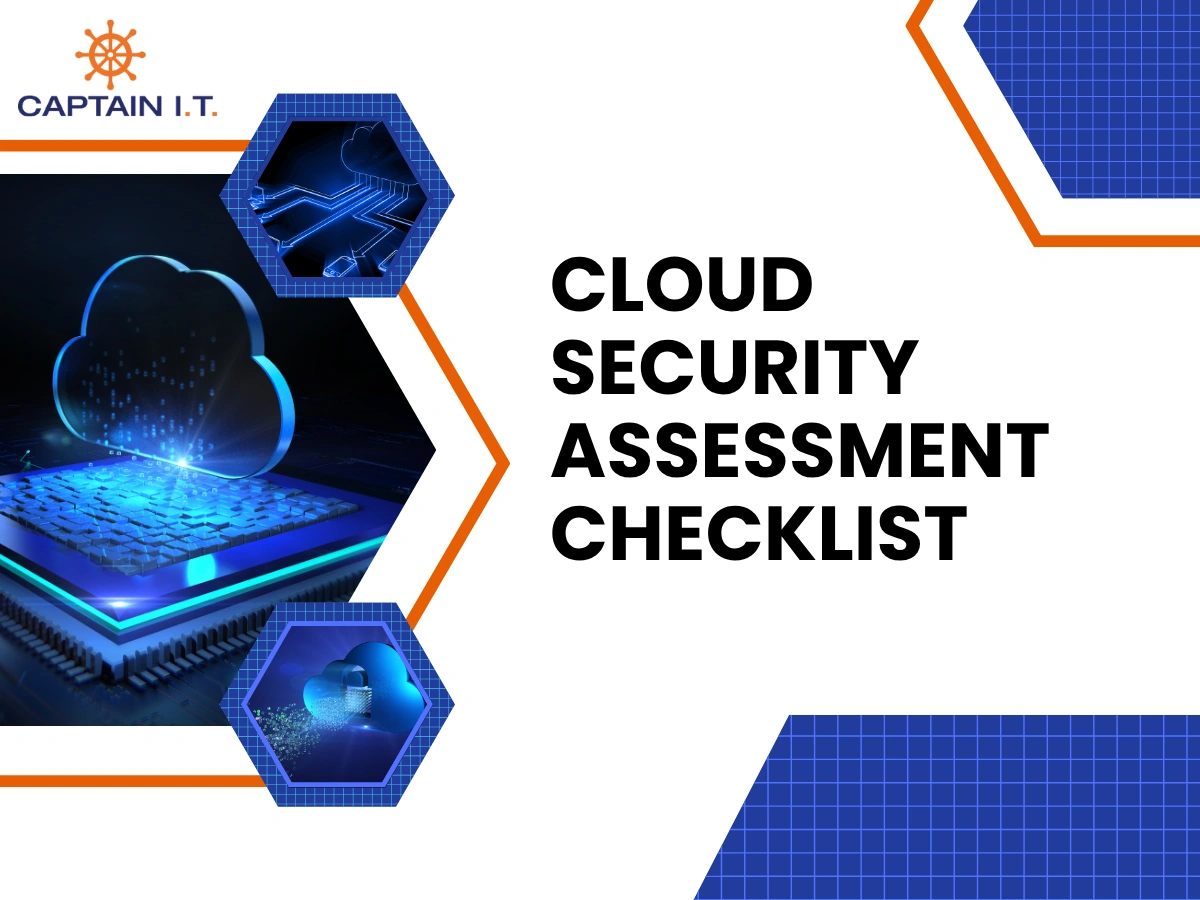Businesses depend on a wide range of IT services to keep operations running smoothly, strengthen security, and improve efficiency. These services are crucial for optimizing technology and ensuring that systems perform reliably while supporting long-term growth. IT services cover diverse areas such as cybersecurity, cloud solutions, network management, data protection, and communication tools, giving organizations both the day-to-day support and the strategic advantages they need. Each of these services plays an essential role in supporting business infrastructure, and we will dive into them in detail to see how they contribute to stability and success.
Below is a structured overview of the 20 most common IT service categories that businesses use to strengthen their technology environments:
- Managed IT Services
- IT Consulting
- Cloud Services
- Cybersecurity Services
- Network Support Services
- Help Desk Support
- Backup and Disaster Recovery
- VoIP (Voice over Internet Protocol)
- Remote Support
- Monitoring Services
- IT Repair Services
- Hardware Support
- SaaS (Software-as-a-Service)
- Technology Infrastructure Support
- Troubleshooting and Technical Support
- Business Intelligence
- Information Reporting
- Mobile Device Management (MDM)
- Server Support
- Communication Services
1. Managed IT Services
Among the different types of IT services, managed IT focuses on providing end-to-end support for a company’s technology environment. Its scope typically includes system monitoring, network management, cybersecurity protection, software updates, help desk assistance, and data backup solutions. Delivered by a Managed Service Provider (MSP), these services ensure that both routine maintenance and complex technical needs are handled consistently by experienced professionals.
This broad coverage makes managed IT services especially valuable for businesses that want predictable costs, proactive problem prevention, and scalable support that grows with their operations. By outsourcing these responsibilities, organizations reduce downtime, strengthen security, and free their internal teams to focus on business growth rather than IT maintenance.
2. IT Consulting
Guiding businesses through digital transformation often requires expertise that goes beyond internal teams, which is why many organizations turn to IT consulting services. IT consultants act as trusted advisors, helping organizations make strategic decisions about technology investments and ensuring that IT infrastructure supports long-term goals. Their guidance goes beyond solving immediate issues, focusing instead on aligning technology with business strategy.
The scope of IT consulting covers technology audits, infrastructure planning, cybersecurity assessments, and digital transformation strategies. By introducing modern solutions such as cloud platforms, automation tools, and data analytics, consultants enable businesses to improve efficiency, reduce risks, and prepare for future growth in a competitive market.
3. Cloud Services
Accessing IT resources over the internet allows businesses to scale quickly and operate with greater flexibility. These solutions, known as cloud services, provide on-demand access to storage, software, and infrastructure without requiring large upfront investments. By shifting technology to the cloud, companies gain the ability to expand or reduce resources as needed, supporting both cost efficiency and operational agility.
Different forms of cloud services include Infrastructure as a Service (IaaS), Software as a Service (SaaS), and Platform as a Service (PaaS). Each helps organizations modernize processes, improve collaboration, and reduce reliance on physical infrastructure. As a result, cloud adoption enables businesses to lower costs, strengthen efficiency, and remain competitive in fast-changing markets.
4. Cybersecurity Services
Businesses today face constant risks from cyber threats such as phishing, ransomware, and unauthorized access, making cybersecurity services essential. These services are designed to safeguard data and infrastructure by providing real-time monitoring, advanced threat detection, and rapid incident response. Their role is to minimize vulnerabilities and keep business systems protected against both common and emerging risks.
The scope of cybersecurity services includes network security, data encryption, firewall management, and vulnerability testing. By staying ahead of evolving threats, they help organizations maintain a secure environment, protect sensitive assets, and preserve customer trust. Strong practices such as multi-factor authentication, regular security audits, and endpoint protection are critical for preventing breaches and ensuring business continuity.
5. Network Support Services
Business networks are the backbone of daily operations, and network support services ensure these systems perform reliably while remaining secure. By providing technical assistance for infrastructure setup, ongoing maintenance, and troubleshooting, they help organizations keep their connections stable and efficient. This proactive support reduces downtime and enables employees to work without disruptions.
To achieve these results, network support covers services such as configuration, security setup, performance optimization, and continuous monitoring. These measures prevent disruptions, reduce downtime, and protect against unauthorized access. With improved uptime, stronger security, and overall better performance, network support services play a critical role in maintaining a reliable and secure network foundation for businesses.
6. Help Desk Support
Employees rely on technology every day, and when problems occur, help desk support provides immediate assistance to keep them productive. This service is designed to resolve common IT issues such as software errors, login difficulties, or system slowdowns with timely solutions. By ensuring that disruptions are addressed quickly, help desk teams help employees stay focused on their tasks instead of losing time to technical setbacks.
Key features of help desk support include ticketing systems, troubleshooting, software installation, and user guidance. These services reduce downtime and improve efficiency by minimizing the time staff spend dealing with IT problems. As a result, businesses maintain smooth daily operations while enabling employees to work more effectively and without unnecessary interruptions.
7. Backup and Disaster Recovery
Data is one of the most valuable assets a business owns, and backup and disaster recovery services play a critical role in safeguarding it. These services are designed to ensure that information can be restored after incidents such as system failures, cyberattacks, or natural disasters. By creating reliable recovery paths, businesses gain the ability to continue operations with minimal disruption, even under unexpected circumstances.
Solutions often include cloud-based backups, off-site storage, and comprehensive system restoration plans. For example, a company in Los Angeles affected by a ransomware attack can quickly restore its files from secure backups, avoiding long-term downtime. By preventing data loss and supporting rapid recovery, these services protect business assets and ensure continuity when disaster strikes.
8. VoIP (Voice over Internet Protocol)
Traditional phone systems can be expensive and limited in flexibility, which is why many businesses are turning to VoIP for communication. This technology allows voice calls to be made over the internet instead of traditional phone lines, offering both convenience and efficiency. With VoIP, organizations eliminate the need for costly infrastructure while gaining a system that can adapt to changing communication needs.
The advantages of VoIP include lower communication costs, easy scalability, and integration with tools like video conferencing and instant messaging. For example, a growing company can use a single VoIP platform to manage calls, meetings, and messaging across locations. By streamlining communication, VoIP reduces expenses, increases flexibility, and supports more effective collaboration.
9. Remote Support
Resolving IT issues no longer requires waiting for on-site visits, as remote support services allow technicians to access systems and provide assistance from anywhere. This service enables IT professionals to troubleshoot software glitches, configure applications, remove malware, and guide employees through technical tasks in real time. By eliminating the need for in-person intervention, remote support provides businesses with a fast, convenient, and highly accessible form of IT assistance.
Businesses gain measurable value from remote support through reduced costs, quicker resolutions, and seamless assistance across multiple locations. Many providers also deliver 24/7 coverage, ensuring that problems are addressed the moment they appear. By minimizing downtime, improving service availability, and scaling easily with organizational needs, remote support strengthens IT efficiency and ensures uninterrupted operations.
10. Monitoring Services
Maintaining reliable IT operations requires continuous oversight of systems to detect and resolve issues early. Monitoring services provide this real-time tracking by observing performance, security, and network health, ensuring that problems are addressed before they disrupt business activities. With 24/7 visibility into critical infrastructure, businesses gain assurance that their technology remains both stable and secure.
The systems most frequently monitored include network uptime, server performance, application stability, and security threats. Proactive monitoring also covers bandwidth usage, hardware health, and data storage. By ensuring consistent performance and enabling early detection of potential disruptions, monitoring services strengthen overall IT system health and keep operations running smoothly.
11. IT Repair Services
When technology fails, IT repair services ensure that systems are restored quickly to minimize disruption. As a critical part of IT support, these services provide repair and maintenance for both hardware and software, keeping business systems functional and reliable. They cover a wide range of equipment, including desktops, laptops, servers, printers, and networking devices, along with software troubleshooting for operating systems and applications.
Beyond emergency fixes, IT repair often includes diagnostics, component replacements, and system upgrades that extend the lifespan of technology. For example, a business experiencing server crashes can have faulty hardware replaced and performance optimized to avoid repeated downtime. By combining quick recovery with preventive maintenance, IT repair services reduce costs, support productivity, and ensure long-term continuity for business operations.
12. Hardware Support
Hardware support ensures that essential business equipment, such as computers, servers, and printers, remains fully functional and dependable. By maintaining the proper performance of these devices, businesses reduce the likelihood of unexpected failures, minimize downtime, and extend the overall lifespan of their hardware investments. This reliability is crucial for keeping day-to-day operations uninterrupted.
Services typically include diagnostics, repairs, and preventive maintenance, all aimed at keeping hardware efficient and addressing potential issues promptly. With consistent care, equipment operates smoothly and for longer periods, supporting productivity without costly interruptions. Reliable hardware support is therefore essential for continuous operations and stronger overall system performance.
13. SaaS (Software-as-a-Service)
Accessing business applications through the internet has become a practical alternative to traditional software installation. This approach, known as Software-as-a-Service (SaaS), allows organizations to use applications without the need to manage infrastructure, perform manual updates, or handle complex installations. By streamlining delivery and access, SaaS makes advanced tools available to businesses of all sizes with minimal setup.
Key benefits of SaaS include predictable subscription pricing, easy scalability, and accessibility from any location with an internet connection. From email and collaboration platforms to data analytics tools, SaaS solutions help organizations reduce costs, improve efficiency, and remain adaptable in competitive markets.
14. Technology Infrastructure Support
Every business relies on a stable technology foundation, and infrastructure support services are designed to manage and maintain that foundation. These services cover networks, servers, storage, and related systems to ensure they function smoothly and securely. By handling both routine maintenance and complex technical needs, infrastructure support provides the reliability businesses need for uninterrupted operations.
Typical services include network management, server maintenance, data storage administration, and security updates. With these safeguards, organizations gain stable systems that minimize downtime and adapt to growing demands. Technology infrastructure support plays a vital role in keeping operations efficient, scalable, and resilient against potential disruptions.
15. Troubleshooting and Technical Support
Resolving IT problems quickly is critical for keeping business systems functional, and this is the role of troubleshooting and technical support. These services provide expert assistance to identify issues, restore functionality, and ensure that technology continues to support daily operations. By offering immediate solutions, they reduce disruptions and give employees the confidence that help is available when systems fail.
Businesses often encounter challenges such as software errors, hardware breakdowns, and network connectivity failures. Support teams respond with diagnostics, repairs, remote assistance, or on-site visits to restore operations efficiently. With rapid problem resolution, businesses minimize downtime, maintain productivity, and keep IT environments running smoothly.
16. Business Intelligence
Business intelligence (BI) is the use of data analysis tools and techniques to help organizations make informed decisions that drive growth and strategy. BI services gather information from multiple sources and convert it into actionable insights, allowing leaders to evaluate performance, recognize trends, and identify opportunities for improvement. This direct approach to using data makes BI essential for aligning technology and resources with business goals.
Key tools include data visualization, dashboards, and predictive analytics, which reveal patterns and support proactive planning. By improving decision-making, increasing efficiency, and supporting long-term strategy, BI services enable businesses to achieve sustainable growth and remain competitive.
17. Information Reporting
Access to accurate and timely data is essential for decision-making, and information reporting services provide structured reports that turn raw information into actionable insights. By gathering data from systems such as finance, sales, and operations, these services organize results into clear outputs that allow leaders to evaluate performance and guide strategic planning.
The most common reports include financial statements, performance dashboards, compliance reports, and operational analyses. These outputs help organizations track key metrics, identify trends, and make informed decisions with confidence. By ensuring stakeholders always have access to relevant, accurate data, information reporting services strengthen business operations and create a solid foundation for accountability and continuous improvement.
18. Mobile Device Management (MDM)
As mobile devices become essential tools in the workplace, businesses need a way to keep them secure and under control. Mobile Device Management (MDM) services allow organizations to manage and protect smartphones, tablets, and laptops used by employees across the company. By centralizing oversight, businesses ensure that mobile technology supports operations without creating unnecessary risks.
Features of MDM include device security, app management, data encryption, and remote wipe capabilities. These tools give organizations control over how devices are used while ensuring compliance with company policies and industry standards. With stronger protection for sensitive data and support for a flexible workforce, MDM has become vital for maintaining both security and productivity.
19. Server Support
Improving server uptime and security requires consistent oversight, and this is the focus of server support services. By monitoring performance, performing routine maintenance, and applying timely updates, these services keep servers stable and reduce the risk of unexpected downtime. Early detection of issues ensures that problems are resolved before they impact operations, allowing businesses to run without costly interruptions.
In addition to uptime, server support enhances security by installing patches, managing firewalls, and monitoring for vulnerabilities. With continuous protection and performance optimization, organizations maintain reliable systems, safeguard critical data, and ensure their servers deliver the stability needed for uninterrupted business operations.
20. Communication Services
Communication services are solutions designed to facilitate interaction within a business, ensuring that employees, teams, and clients remain connected. These services often include email systems, VoIP, instant messaging, and video conferencing, which together create a unified framework for exchanging information. By offering multiple channels under one system, they help businesses maintain reliable and consistent communication.
The integration of these tools reduces miscommunication, supports collaboration across teams, and increases overall efficiency. Employees can share updates, hold meetings, and manage calls within a single platform, whether in the office or working remotely. With streamlined communication in place, businesses improve collaboration, strengthen productivity, and achieve greater operational efficiency.
How Do IT Services Support Operational Efficiency for Businesses?
IT services enhance operational efficiency by improving communication, strengthening data management, optimizing networks, and reducing downtime. These areas directly impact how smoothly a business functions, ensuring that employees have the tools and support needed to remain productive. With the right IT foundation, organizations can align technology with business goals and work more effectively.
Beyond immediate improvements, IT services deliver long-term value by enabling scalability and maintaining competitiveness in evolving markets. Automation, cloud solutions, monitoring, and cybersecurity not only streamline daily operations but also create a resilient framework for future growth. To achieve maximum efficiency, businesses should partner with a trusted Managed Service Provider (MSP) that can tailor services to their needs and provide continuous guidance as technology demands change.
